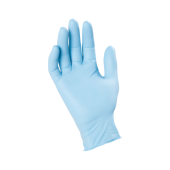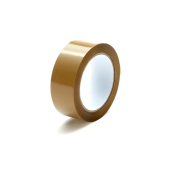Choosing the right safety glasses can be tricky, but this guide will provide all the information you need to make the best choice.
By the end, you’ll understand the key features to look for, such as lens materials and frame designs, and how to select glasses that offer optimal protection and comfort. Our expert advice ensures you’ll find the perfect pair for your specific needs.
Plus, we’ll help you tackle the next step in your safety gear selection, like pairing glasses with face shields or hearing protection.
Why Are Safety Glasses Important?
Safety glasses, also referred to as safety goggles or protective eyewear, are crucial for shielding your eyes from possible challenges. They provide:
- Protection from debris in construction and manufacturing settings.
- Barrier against chemical splashes in laboratories and chemical processing.
- Defense against flying particles, dust, and dirt in various industrial applications.
Safety glasses are widely used across industries such as construction, automotive, and warehousing, where tasks like grinding, welding, or working with materials requiring careful handling demand reliable eye protection, making them an indispensable part of personal protective equipment (PPE).
Explore our Safety Glasses category to view available options.
Key Features to Consider
When choosing safety glasses, focus on these essential features:
1. Lens Material
- Polycarbonate Lenses: Lightweight and impact-resistant, ideal for most industrial settings.
- Glass Lenses: Scratch-resistant but heavier.
- Trivex Lenses: Lightweight, durable, and offer optical clarity.
2. Lens Coatings
- Anti-scratch coatings: Extend the lifespan of your glasses.
- Anti-fog coatings: Essential for humid environments or intense activities.
- UV protection: Necessary for outdoor workers.
Learn how to keep safety glasses from fogging up.
3. Frame Design
- Wraparound styles for comprehensive side protection.
- Adjustable arms for a secure and customized fit.
- Padded frames for enhanced comfort during extended use.
4. Compliance with Standards
Look for glasses that meet the EN166 standard, ensuring they’re tested for impact resistance, optical quality, and durability. Discover what the EN166 standard entails.
Types of Safety Glasses
Safety glasses come in various types, each tailored for specific hazards:
1. Impact-Resistant Glasses
Designed for environments with materials like dust, fine particles, or light debris that may become airborne, such as construction and automotive industries.
2. Chemical Splash Goggles
Ideal for labs and industries handling substances that require careful handling, they provide a snug fit to minimize the likelihood of liquid exposure.
Learn how to choose safety glasses for a chemistry lab.
3. Specialized Glasses
For welding, choose goggles or glasses that protect against intense light and sparks. Read about choosing welding goggles.
Size and Fit Guide
Ensuring the right fit is crucial for safety and comfort. A proper fit reduces the likelihood of gaps that could compromise protection and ensures all-day comfort. Here’s a quick sizing guide:
| Feature | Fit Description | Recommendation |
| Frame Width | Should match the width of your face | Adjustable options best |
| Temple Length | Long enough to fit securely around the ears | Check for flexibility |
| Lens Height | Cover entire eye area, including peripherals | Wraparound frames ideal |
For more specific industries, such as electricians, see our guide to choosing safety glasses for electricians.
Where to Buy Safety Glasses
Here are some top European suppliers offering reliable safety glasses. Each supplier is known for quality and a diverse range of options, including advanced lens coatings, customizable frames, and compliance with European safety standards, which ensure robust protection, quality assurance, and adherence to industry best practices:
Each supplier offers a variety of models to suit different needs and industries.
Related Protective Equipment

Safety glasses are often paired with other protective equipment to ensure proactive safety planning to address situations requiring enhanced safety measures, such as:
- Hearing Protectors to shield against noise.
- Hard Hats and Helmets for head protection.
If you’re also considering face shields, check out our guide: How To Choose The Right Face Shields.
Conclusion
We hope this guide has provided valuable insights into selecting the right safety glasses, from lens materials to frame designs, ensuring you make an informed choice. Whether you’re in construction, laboratories, or any other high-risk environment, we’re here to support your safety needs.
Explore our Safety Glasses category, featuring trusted brands like Portwest, Bolle Safety, and Skydda, all available with just a click.
For related insights, visit our articles:
Have questions or need assistance in finding the perfect pair? Don’t hesitate to reach out—we’re always here to help ensure your protection and confidence in every purchase.
– The Droppe Team
Frequently Asked Questions
Ensure the frame width matches your face, the temples are long enough to fit securely, and the lenses cover your entire eye area.
Yes, there are safety glasses designed to fit over prescription glasses, or you can choose prescription safety glasses.
Different safety glasses are designed for specific hazards, such as impact, chemicals, or intense light, so choose based on your work environment.
Look for glasses with anti-fog coatings, or consider using anti-fog sprays to keep your lenses clear during use.
Replace them if lenses are scratched, frames are damaged, or they no longer fit comfortably or securely. Regular inspection is key to ensuring protection.

















